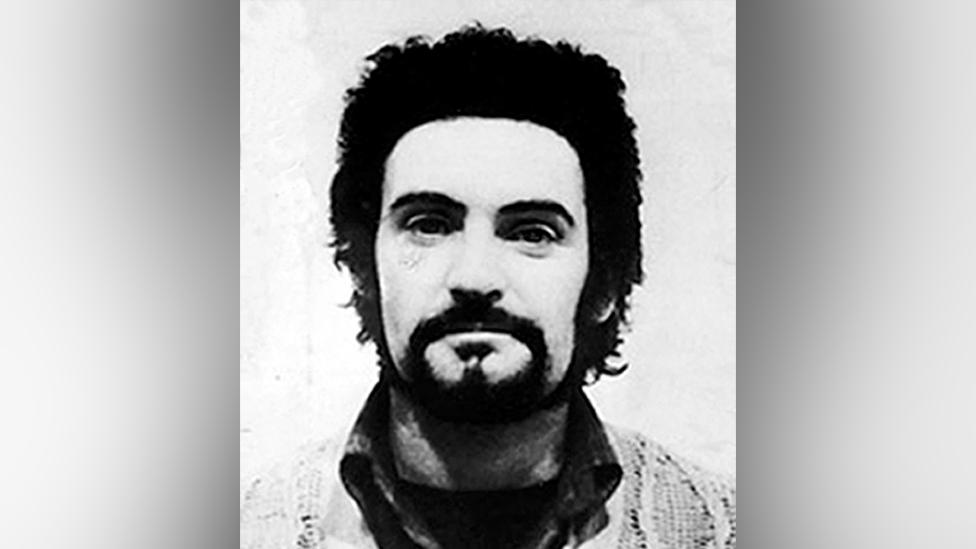Yorkshire Ripper dead: Reporter John Cundy recalls hunt for killer
- Published
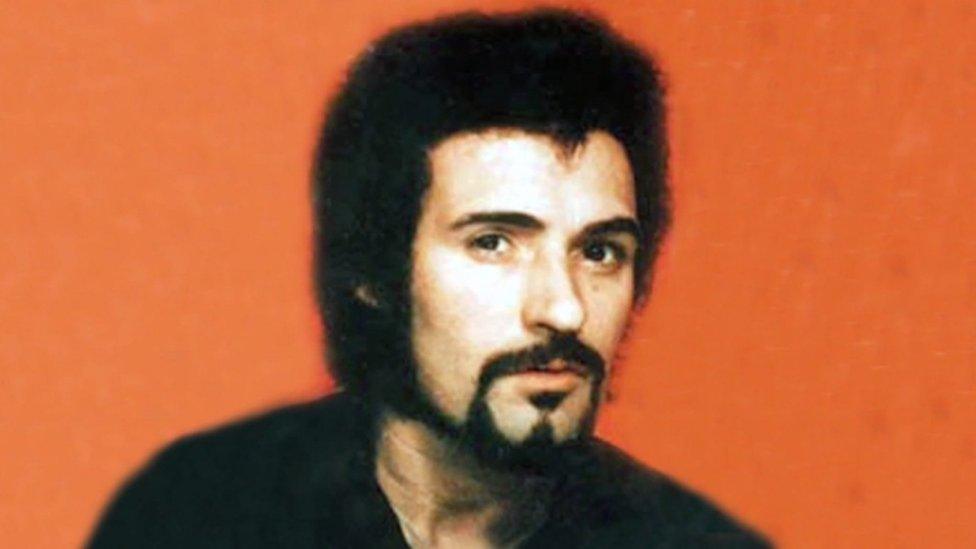
Peter Sutcliffe was jailed in 1981 for the murder of 13 women and attempted murder of seven more
Yorkshire Ripper Peter Sutcliffe, who has died aged 74, murdered 13 women and attempted to murder seven others between 1975 and 1980 before he was caught and jailed for life in 1981. John Cundy, 72, a former BBC crime correspondent in Yorkshire, looks back on the manhunt for the serial killer.
Sutcliffe targeted women across West Yorkshire and Greater Manchester, killing 13 and attacking many more while police sought desperately to hunt him down.
While he was at large no woman felt safe.
Sutcliffe claimed his first victim, Wilma McCann, in October 1975, but it took several more murders for police to realise they were looking for just one man.
As the killings continued a pattern began to emerge. His victims were routinely struck over the head with a hammer before being slashed with a knife or screwdriver.
But the detectives made slow progress. It was a time before computers when every piece of evidence was recorded on index cards in a massive room at Millgarth Police Station, in Leeds.
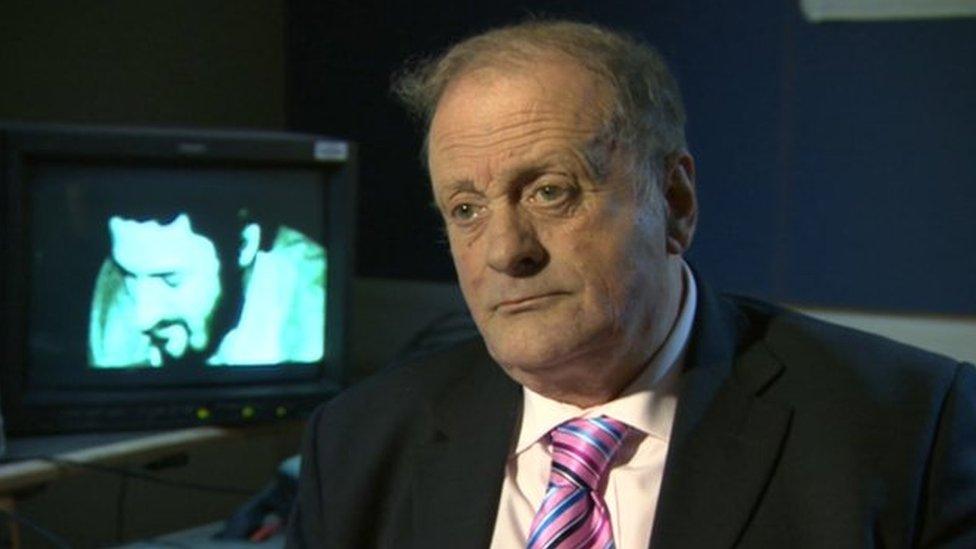
John Cundy was the news editor of BBC Radio Leeds when Sutcliffe was arrested in Sheffield in 1981
At one stage the investigation room floor had to be reinforced due to the weight of the files.
But as pressure grew to bring the Ripper to justice, the inquiry was thrown completely off track when, in 1978, a series of letters and a tape recording, ostensibly from the Ripper himself, were received by West Yorkshire Police.
The recording of a man with a Sunderland accent taunting the police led officers to focus their search on the Castletown area of Sunderland.
Crucially, during that period, because they were looking for totally the wrong person, three more women were murdered.
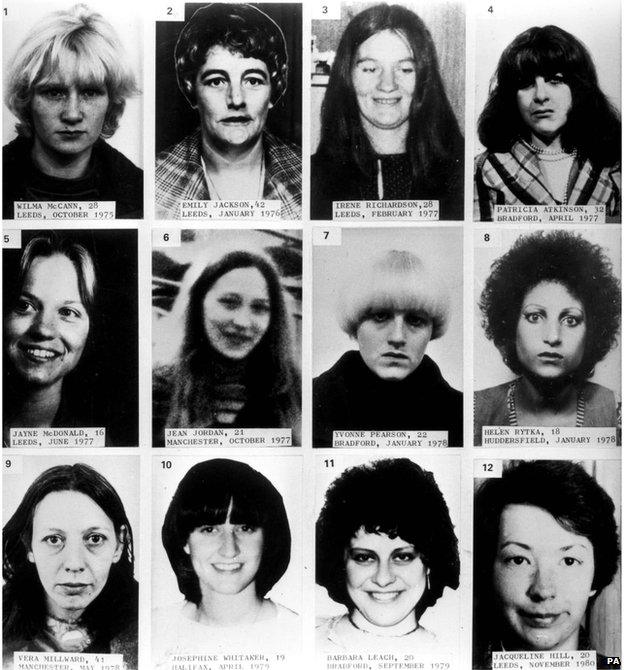
Sutcliffe murdered 13 women between 1975 and 1980 in West Yorkshire and Greater Manchester
When Sutcliffe was finally apprehended his arrest, as in so many cases, was a stroke of sheer luck.
Two officers had approached a man, who later turned out to be Sutcliffe, while he was sitting in a car with a woman in Melbourne Road, Sheffield.
One of the officers spotted the registration plate on the car did not match the number on the tax disc.
Their suspicions aroused, Sutcliffe was taken in for questioning.
A second stroke of luck followed soon after.
While being spoken to by the arresting officers Sutcliffe had asked to go to the toilet behind a nearby building.
When police returned to the scene the following day they discovered a hammer hidden in a drainpipe near to where Sutcliffe had gone supposedly to relieve himself.
That was the hammer which he had used to kill almost all of his victims.
With the evidence in hand Sutcliffe confessed to police.
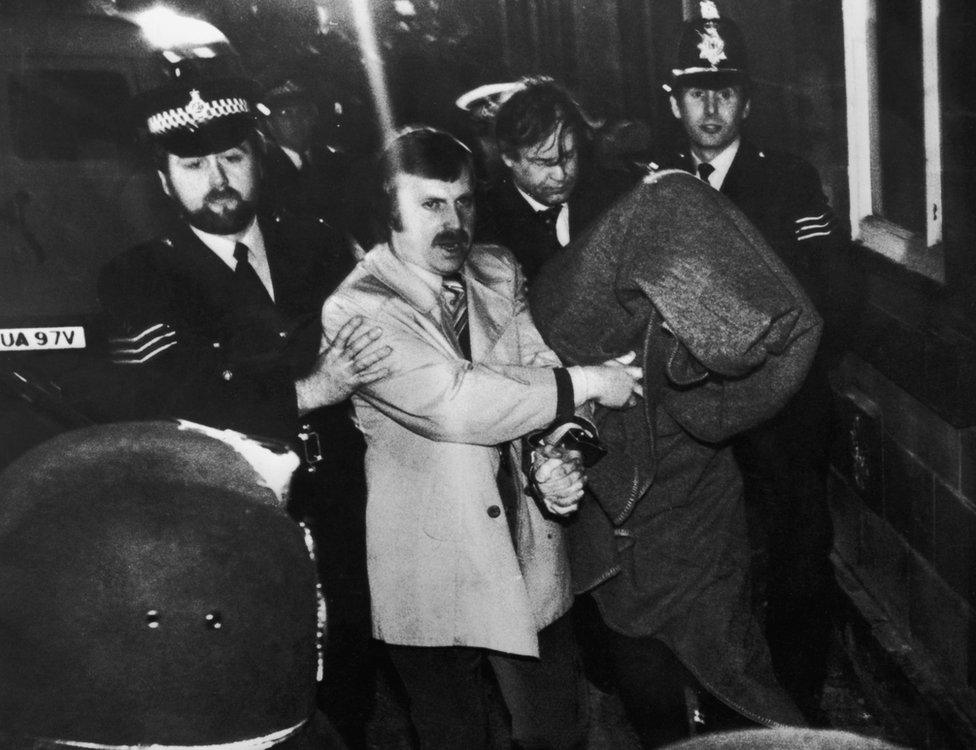
Peter Sutcliffe had to be smuggled into Dewsbury Magistrates' Court ahead of his first appearance
When he was brought before magistrates in Dewsbury charged with the murder of Jacqueline Hill officers had to smuggle Sutcliffe from the police van in to the court with a blanket over his head while others held back the crowds to clear a path.
For six years Sutcliffe had kept whole communities in fear, people wondering, "Who on earth is this man?"
He was eventually found guilty of 13 murders and seven attempted murders in May 1981, and was given 20 life sentences.
In 2010, following an appeal against the sentence, the High Court ruled he would never be released from prison.
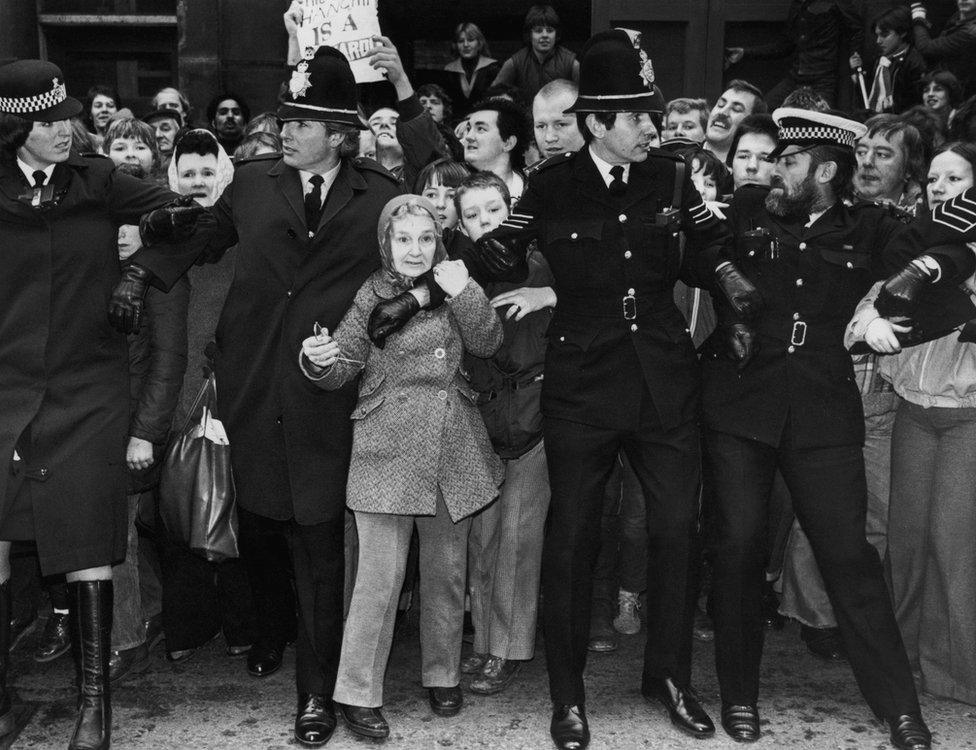
Angry crowds gathered outside Dewsbury Magistrates' Court when Sutcliffe appeared there following his arrest
- Published13 November 2020
